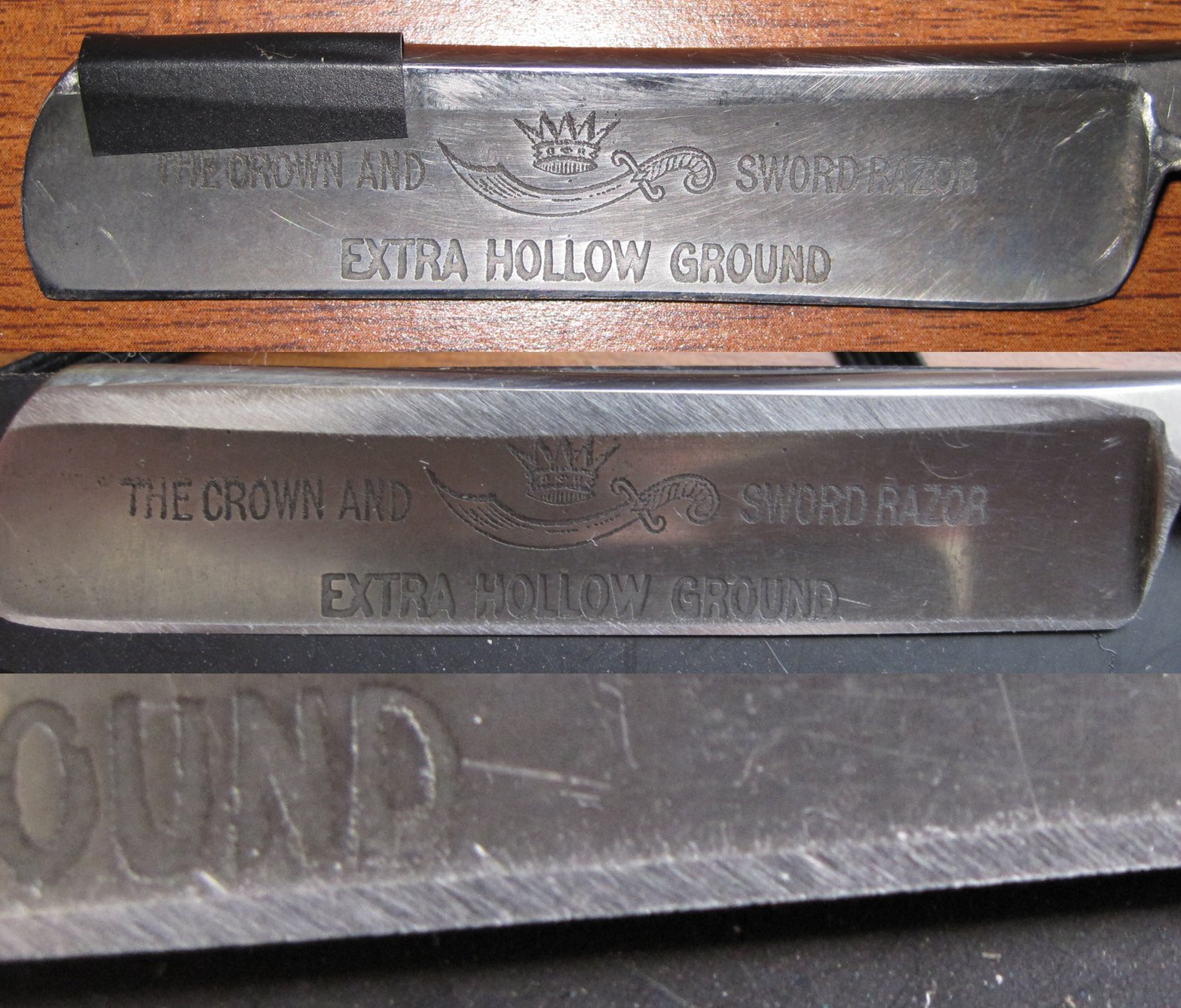Results 11 to 18 of 18
-
02-02-2010, 11:19 PM #11
-
02-03-2010, 03:43 AM #12Senior Member

- Join Date
- Mar 2007
- Posts
- 608
Thanked: 124
I had a big, beautiful W&B with this same problem. It ended up looking like a traingle before I was done trying to get rid of the bad steel. In my case, I may have overheated it with polishing compounds, though I thought I was careful with them.
-
02-03-2010, 03:00 PM #13Junior Member

- Join Date
- Dec 2009
- Posts
- 17
Thanked: 0
-
02-03-2010, 08:14 PM #14Member

- Join Date
- Dec 2009
- Posts
- 43
Thanked: 11 Not the Hone
Not the Hone
OK. For the people who still think it's the hone and not the blade. I used the HD hone on this crown and sword that had a frown on it. It looks very different than the W&B edge. I appreciate the advice. Sorry the picture came out so huge.

-
02-04-2010, 01:58 AM #15

Please pay attention they are different razor and has different steel . they will not act to your stone same.hope this helps
-
02-05-2010, 03:27 PM #16

I have a little 1/4 grind Haywood blade that is suffering from the same problem. The edge just crumbles away. Sometimes I can break little pieces off with a little pressure on my thumbnail. I've been using a DMT 1200 but just switched to the 8000 so progress is slow.
-
02-05-2010, 07:56 PM #17Electric Razor Aficionado

- Join Date
- Apr 2006
- Posts
- 3,396
Thanked: 346
-
02-05-2010, 08:34 PM #18

The too course hone would be my first try because of the expertice of the people that presented it. But also keep in mind metal can defoilate when in oxidises that is the different molecules seperate. Due to rust or exposure to chemicals ie. soaps etc. I've worked with metal all my life and have seen this quite often. In a lot of older steels the chemical compounds where a lot simpler than modern steels which lends itself to this problem.


 LinkBack URL
LinkBack URL About LinkBacks
About LinkBacks








 Reply With Quote
Reply With Quote ), still the same problem. I think I'll end up using it as a practice blade for when I get my greaseless compounds next week.
), still the same problem. I think I'll end up using it as a practice blade for when I get my greaseless compounds next week. 